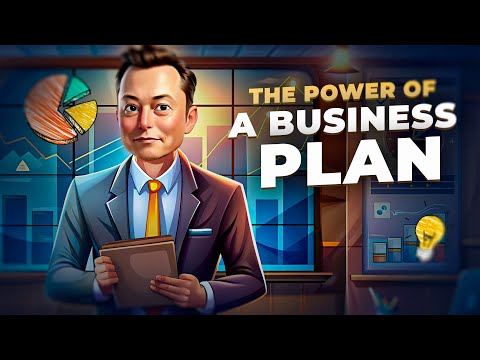
title
Hello, friends! Today on our show "Path to a Billion," we're tackling the beast
known as the business plan. Yes, that very document that promises to turn
you into the next Mark Zuckerberg… but only if you manage not to fall asleep by
the second section. Ready? Let’s dive in! What is a Business Plan? So, a business plan is your guide to
the world of business. Think of it as a treasure map but with a lot of bureaucracy.
It’s what you need to show investors where you’re planning to spend their money.
And no, it’s not just expensive coffee.
What if I have no money but a great idea? Well, if you’ve got a brilliant
idea but no cash—welcome to the club, we’ve got plenty of those! A business plan usually consists of
several sections: business description, market analysis, sales strategy, financial
plan, and about a million tables that you probably won’t understand. Oh, and don’t
forget the competitor analysis—that’s when you look jealously at those doing
the same thing but obviously worse. Let’s break down the main
components of a business plan: Description of the Idea: A clear and concise
explanation of your product or service, articulated in a way that even someone without
specialized knowledge could easily understand. If your idea isn’t clear to everyone, it’s
unlikely the market will see its value.
Market analysis: A detailed examination of the
current market conditions, existing competitors, and potential opportunities. This section
justifies why your product will be in demand despite the presence of alternatives,
highlighting what makes it unique. Marketing strategy: An action plan for
promoting your product, with a key focus on creating a unique selling proposition. This
is where you outline how you will communicate to your audience that your product is essential
and why they should choose it over others. Financial Plan Now, let’s move on to a crucial part:
the Financial plan.
This section includes income and expense forecasts,
justification of expected profits, and a detailed analysis of all costs. You need
to demonstrate how and through what means the project will generate profit, including detailed
financial projections for the coming years. Revenue forecasting is also essential.
This involves assessing potential profits based on current and future indicators.
Highlight why your business has growth potential and what financial results can
be expected in the short and long term. Expenses need to be calculated too.It's
important to show that you realistically assess the necessary resources and financial
risks associated with the project. Don’t forget to account for team expenses, including the coffee
budget and the cost of maintaining your optimism. So, turn those ideas into a business
plan. Genius needs execution. And now, our regular segment on success stories: In 1971, Starbucks used a business plan
with $3.8 million in investments to expand its coffee shop chain.
They spent on growth and
marketing, attracting investors and increasing locations from 4 to 17 by 1987, making
the company profitable and famous. Now, no morning is complete without Starbucks.
Airbnb used a business plan with a revenue forecast of up to $200 million over three
years, which helped secure $7.2 million in investments from Sequoia Capital. Thanks to
this plan, by 2013, the company reached 10 million bookings worldwide. The company chose
a scaling strategy. This is a bold decision! Dropbox used a business plan aimed
at user growth, securing $1.2 million from Y Combinator. Success came through
viral marketing and a referral program, boosting their user base 60 times in just one
year. This is an example of viral marketing. That’s all for today! Go start drafting
that business plan. But before you do, make sure to click the link and
jump into the game “X Empire.”




 Bengali
Bengali Chinese (Simplified)
Chinese (Simplified) English
English Hindi
Hindi Indonesian
Indonesian Irish
Irish Spanish
Spanish Swedish
Swedish Turkish
Turkish